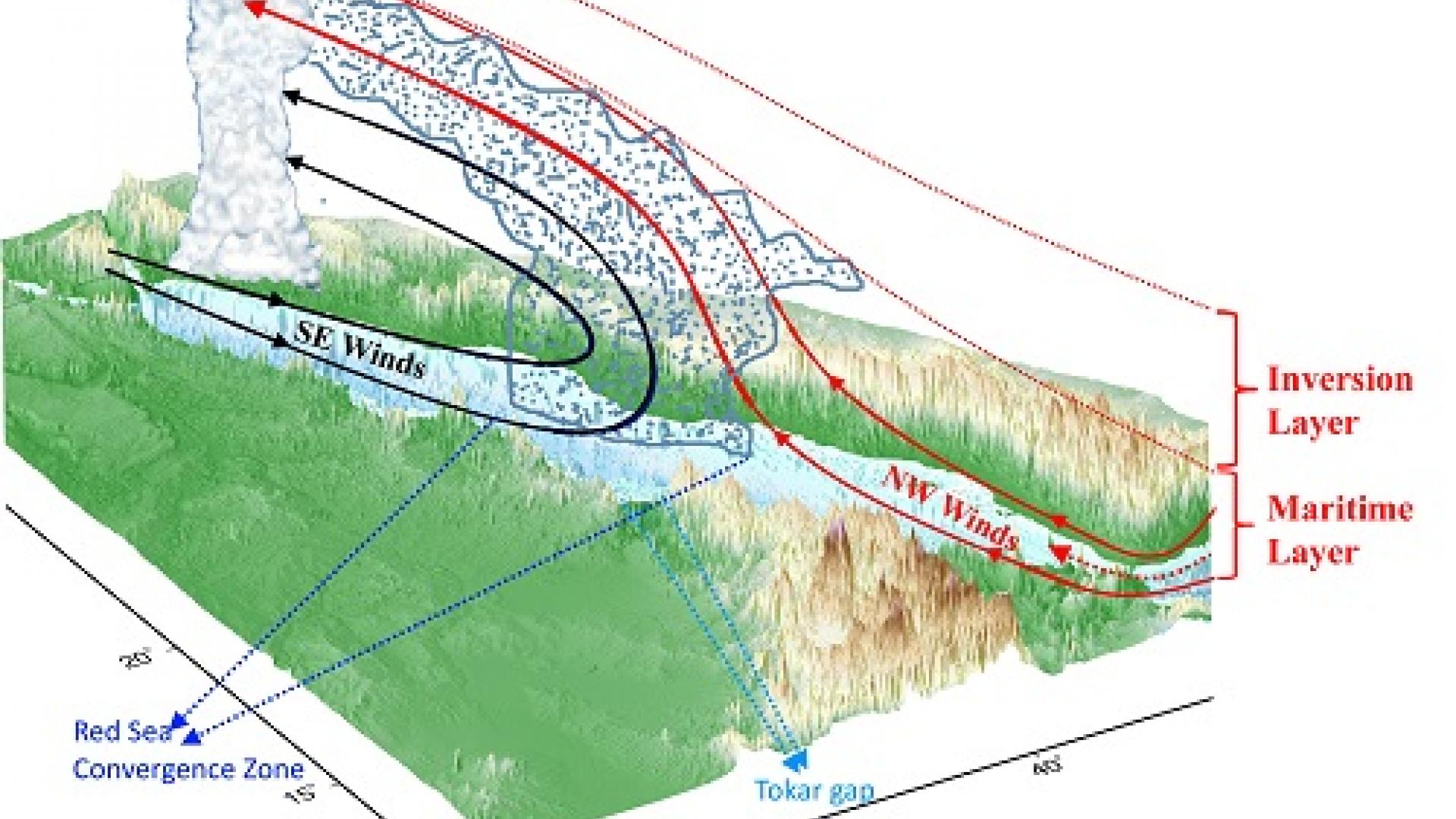© 2017 KAUST
The El Niño Southern Oscillation (ENSO) has been shown, for the first time, to play a role in increased rainfall and storms along the Red Sea and surrounding regions.
During the winter months, from October to March, the northern Red Sea experiences northwesterly winds from the Mediterranean and southeasterly winds from the Gulf of Aden. These winds form the Red Sea Convergence Zone (RSCZ), an area characterized by cloudy skies and drizzle that contrasts with the typically clear weather of the region.
Associate Professor of earth science and engineering Ibrahim Hoteit and colleagues at KAUST have explored how the intensity and position of the RSCZ affects rainfall during the winter months and how it is influenced by the ENSO.
“The Red Sea is a narrow basin; thus, it requires high spatially resolved data to accurately describe variations in the RSCZ,” explains Hoteit. “This means we require extensive and accurate datasets to assess the influence of the ENSO variability on the region’s rainfall.”
The team modeled rainfall patterns between 1979 and 2016. This involved combining data from a number of datasets from NASA’s ERA-Interim, a global atmospheric reanalysis, and the Advanced Very High Resolution Radiometer for sea surface temperatures with satellite data from the Tropical Rainfall Measuring Mission and the Asia focused APHRODITE, a dataset containing gridded daily precipitation.
Using data on wind speeds and patterns, the researchers first identified the position and intensity of the RSCZ and the locations of the associated high- and low-pressure systems. Then, to explore the mechanisms responsible for rainfall, they analyzed variables, such as convective available potential energy, total column perceptible water vapor and evaporation.
“Because rainfall intensity is associated with the meeting of different water-vapor fluxes, we used a moisture budget analysis to identify the sources of moisture and to estimate the amount of rainfall in the region,” says Dr. Hari Dasari, the first author of the study.
Read the full article

